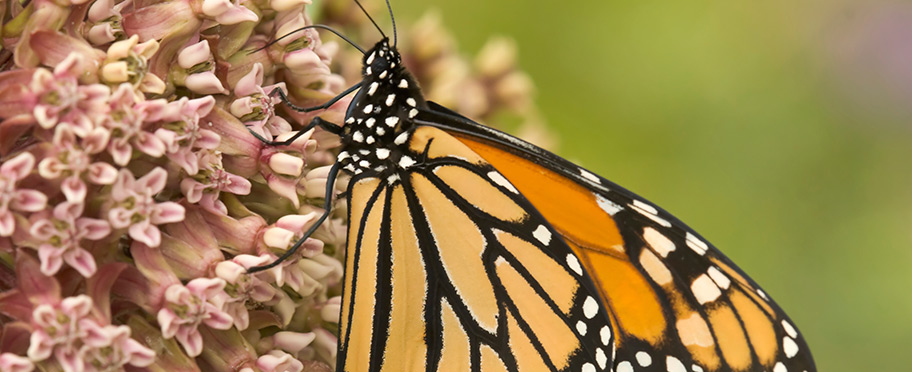Planting Instructions
- Plant Selection
Select perennial natives that already grow easily in your region and climate. Popular flowers are listed in this Plant Chart or scroll through these indigenous plants recommended by Chesapeake Natives.
Your local garden centers can suggest a variety of butterfly-friendly flowers that bloom at different times throughout the season. Begin with foundational groups of 6 to 12 plant species that combine host plants for caterpillars and nectar plants for butterflies. Douglas Tallamy, acclaimed author and entomologist, ranks herbaceous plants by the number of butterfly species they support. - Site selection
- Sun – Most host plants and native nectar plants for butterflies do best where there is sun six or more hours a day.
- Soil – If your yard has heavy clay, adding top soil is important. Raised beds work best in urban areas with compacted soil. Ask your garden shop for additional advice.
- Water – Choose an area accessible to a water source. Newly planted gardens need plenty of water, especially during the hot summer months.
- Size – Choose the size garden you are prepared to water and keep weeded.
- Planting
- Timing – Plant native perennials in May/June or September/October (avoiding frost).
- Bed preparation – Remove grass sod completely; turn over the soil to a depth of 8+ inches and mix in top soil or other recommended amendments.
- Pathways – Add one or more pathways to make access to the interior of the garden easier, if needed, for watering and weeding.
- Raised beds – Purchase raised bed garden kit or materials and build. Fill them with top soil.
- Spacing – Place plants about one foot apart.
- Planting – Gently remove the plant from its container and place it in the ground so that its soil is even with the surrounding ground, then loosely fill around the plant.
- Mulching – Apply a heavy blanket of mulch to keep weeds down and retain moisture. Do likewise for pathways with coarser wood chips.
- Our partnering garden centers offer the Butterfly Six Pack or the Butterfly Dozen – two easy-to-plant kits with 6 or 12 different local native plants to begin your butterfly habitat. Each kit combines vital native “host” plants to feed butterfly caterpillars plus native flowering plants that produce the abundant nectar adult butterflies need throughout the season (with early and late bloomers). Remember: native plants sustain native butterflies, exotic plants do not!
- Signage
- Signs are educational and help gardeners distinguish early in the season which plants are “keepers” and which are weeds.
- Keep garden center plant tags with your flowers for identification and care.
- Maintenance
- Watering – Water regularly especially during the hottest months of the first year, when the native perennials are putting down deep roots.
- Weeding – Keeping up with a thriving crop of weeds is generally the gardener’s greatest challenge. It’s helpful to mark “keeper” plants with a small bamboo or other stake placed a few inches north of the main stem so as not to block the sun.



